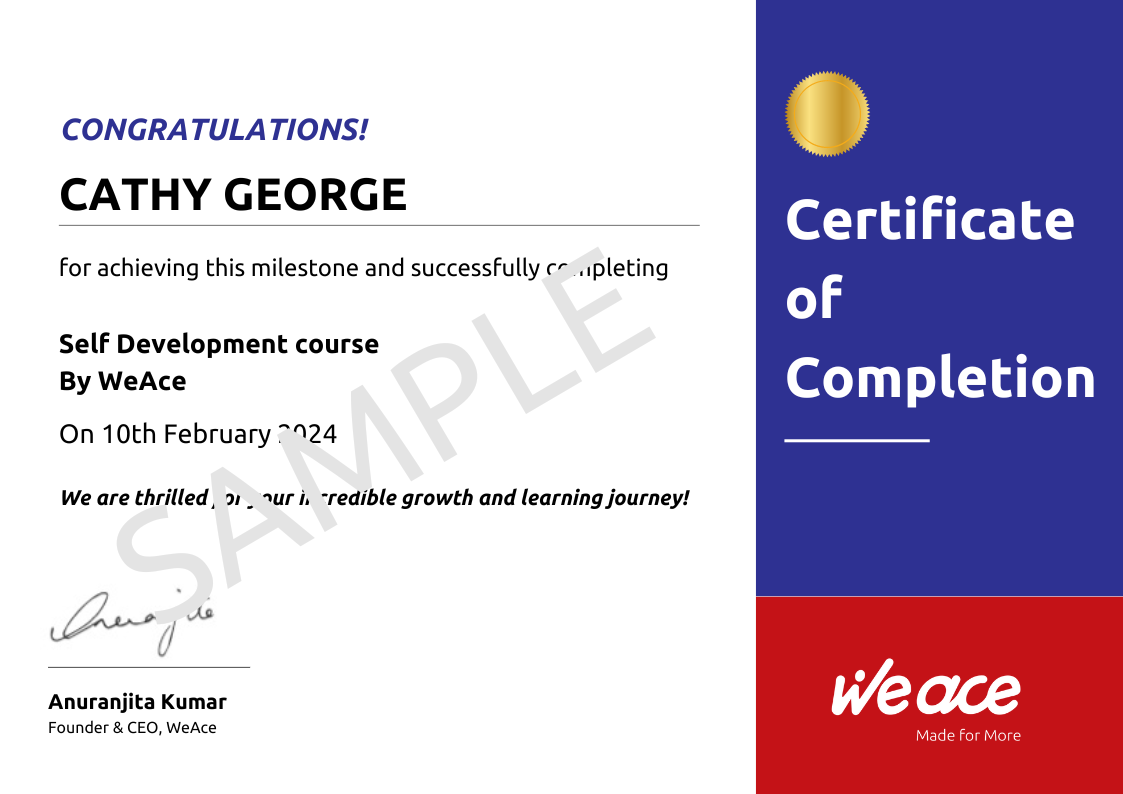Course Details
This is a half-day program for a batch size of 30 professionals.
1. Introduction to Writing and Presentation Skills
- Importance: Understand why strong writing and presentation skills are crucial for personal and professional success.
- Objectives: Define what you aim to achieve by improving these skills.
2. Fundamentals of Effective Writing
- Clarity and Conciseness: Learn how to write clear and concise sentences. Avoid jargon and unnecessary words.
- Grammar and Punctuation: Review basic grammar rules and punctuation marks. Understand common mistakes and how to avoid them.
- Structure and Organization: Understand the importance of structuring your writing. Learn about introductions, body paragraphs, and conclusions.
- Style and Tone: Adapt your writing style and tone to suit your audience and purpose.
3. Types of Writing
- Professional Writing: Focus on emails, reports, and proposals. Learn the standard formats and conventions.
- Creative Writing: Explore storytelling techniques, character development, and descriptive language.
- Academic Writing: Understand how to structure essays, research papers, and theses. Learn citation and referencing styles.
4. Writing Process
- Prewriting: Techniques for brainstorming, outlining, and planning your writing.
- Drafting: Tips for getting your first draft down without worrying about perfection.
- Revising and Editing: Strategies for revising for content and clarity. Learn how to edit for grammar, style, and punctuation.
- Proofreading: Final checks for errors and inconsistencies. Techniques for effective proofreading.
5. Presentation Skills Fundamentals
- Planning and Preparation: Understand your audience and purpose. Learn how to structure your presentation logically.
- Creating Visual Aids: Use slides effectively. Tips for designing clear and engaging PowerPoint presentations.
- Rehearsal Techniques: Practice your presentation. Learn how to use notes effectively and how to handle timing.
6. Delivering Presentations
- Public Speaking Skills: Techniques for speaking clearly and confidently. Learn how to use your voice effectively (tone, pitch, and volume).
- Body Language: Understand the importance of body language. Learn how to use gestures, eye contact, and movement to enhance your message.
- Engaging the Audience: Techniques for keeping your audience interested and engaged. Learn how to ask questions and handle interruptions.
7. Handling Q&A Sessions
- Preparing for Questions: Anticipate potential questions and prepare your answers.
- Responding to Questions: Learn strategies for answering questions clearly and confidently.
- Dealing with Difficult Questions: Techniques for handling challenging or unexpected questions.
8. Overcoming Anxiety and Building Confidence
- Understanding Anxiety: Learn about the causes of public speaking anxiety.
- Techniques to Reduce Anxiety: Strategies for relaxation and visualization. Learn how to use breathing exercises and positive thinking.
- Building Confidence: Tips for boosting self-confidence through practice and preparation.
9. Advanced Writing Techniques
- Persuasive Writing: Learn how to craft arguments and persuade your audience.
- Technical Writing: Understand how to write clear and concise technical documents.
- Copywriting: Techniques for writing effective marketing and advertising copy.
10. Advanced Presentation Techniques
- Storytelling in Presentations: Learn how to use storytelling to make your presentations more engaging.
- Interactive Presentations: Techniques for involving your audience and encouraging participation.
- Using Technology: Explore advanced tools and technologies for enhancing your presentations (e.g., interactive polls, live feedback tools).
11. Practical Exercises and Workshops
- Writing Exercises: Participate in exercises to practice different types of writing. Get feedback from peers and instructors.
- Presentation Practice: Deliver short presentations and receive constructive feedback. Practice handling Q&A sessions.
- Peer Review and Collaboration: Engage in peer review sessions to critique and improve each other's work.
12. Real-Life Applications and Case Studies
- Case Studies: Analyze examples of effective writing and presentations. Learn from successful professionals.
- Guest Speakers: Hear from experts in writing and public speaking. Gain insights into best practices and real-world applications.
13. Developing a Personal Action Plan
- Setting Goals: Define specific, measurable goals for improving your writing and presentation skills.
- Continuous Improvement: Learn how to seek feedback and continue practicing. Create a plan for ongoing development.
For more information on pricing and registration, contact [email protected]
Program Structure
Introduction to Writing and Presentation Skills
Fundamentals of Effective Writing
Writing Process
Fundamentals of Presentation Skills
Delivering Presentations
Handling Q&A Sessions
Overcoming Anxiety and Building Confidence
Get your certificate of completion

-
DURATION 3 Hour(s)
-
LEVEL Entry Level (0-2 years), Junior Level (2-7 years), Mid Level (8-15 years), Senior Level (15+ years)
-
FORMAT Online Instructor Led
-
CERTIFICATION Yes
-
Academy Leadership & Management
-
Topics Writing & Presentation Skills
-
KEY LEARNING AREA improve your writing and presentation skills
-
SKILLS Interpersonal Skills
-
BEST FOR Manager,leadership
-
TRAINER WeAce

/filters:strip_exif()/wocademy/images/logo/TsTw1PhMdrqwuV4QcOOVu5L2EMwQnypqwYcrfv4E.jpg)
 Led
By: WeAce
Led
By: WeAce
 Online
Self
Paced
Online
Self
Paced
/filters:strip_exif()/wocademy/images/logo/PFUYKFVvLVaaED0Wb3iD7H4iBuek67eDyhZzraKJ.jpg)
/filters:strip_exif()/wocademy/images/logo/FfP9SVhDsZ4lA4G4FZvBiYV83HRXSI6swWDTelwq.jpg)
/filters:strip_exif()/wocademy/images/logo/u9t3V7mNYeEl2rBQC27TN62qnEzJG2to4VMEWQQh.jpg)
/filters:strip_exif()/wocademy/images/logo/MMsalpEWnPd8eAGkx2ECWJxj50MreFS1Yl9Lv3Su.png)
/filters:strip_exif()/wocademy/images/logo/ZvsBYA0HnZvJYNUB1viaiPZVhHn1CkUBPxwq4sDc.png)
/filters:strip_exif()/wocademy/images/logo/ZCI2KVXLdSFxnp90pkIeNYv5EwH3NDgh8qEvpp3g.jpg)
/filters:strip_exif()/wocademy/images/logo/sDuKo4V3PiFDa2UGhRUH34YVU108EQqytjphS8iJ.jpg)